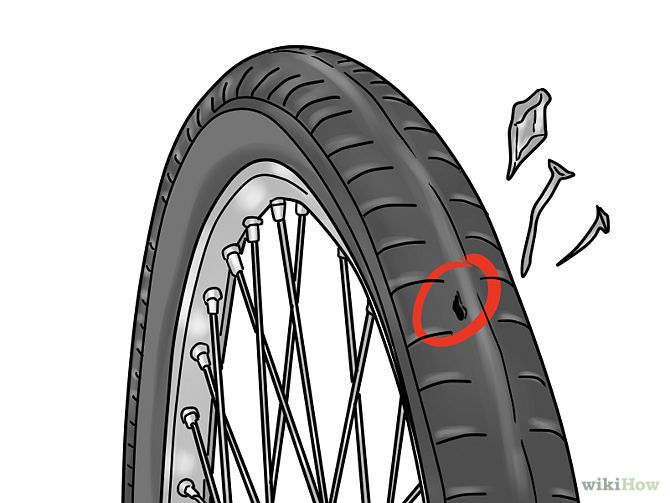“This post contains affiliate links, and I will be compensated if you make a purchase after clicking on my links.”
Road hazards come in many shapes and sizes. Sometimes, no matter how careful you are, there will always be small and sharp debris that will slip through and cause damage, especially to your tires. And that’s where a tire patch comes into the picture.
AppleZoomZoom / Shutterstock.comLet’s face it, a puncture is inevitable in a tire’s lifespan and repair will be required. And car owners know that getting punctures is part of the experience of owning a car.
However, not all car owners know how to properly deal with them. But don’t fret! This article will serve as your all-encompassing guide on proper tire inspection and patching.
Contents
A punctured tire is a common type of car issue that usually involves a foreign object, usually sharp, piercing through the rubber and letting air escape, eventually causing a flat.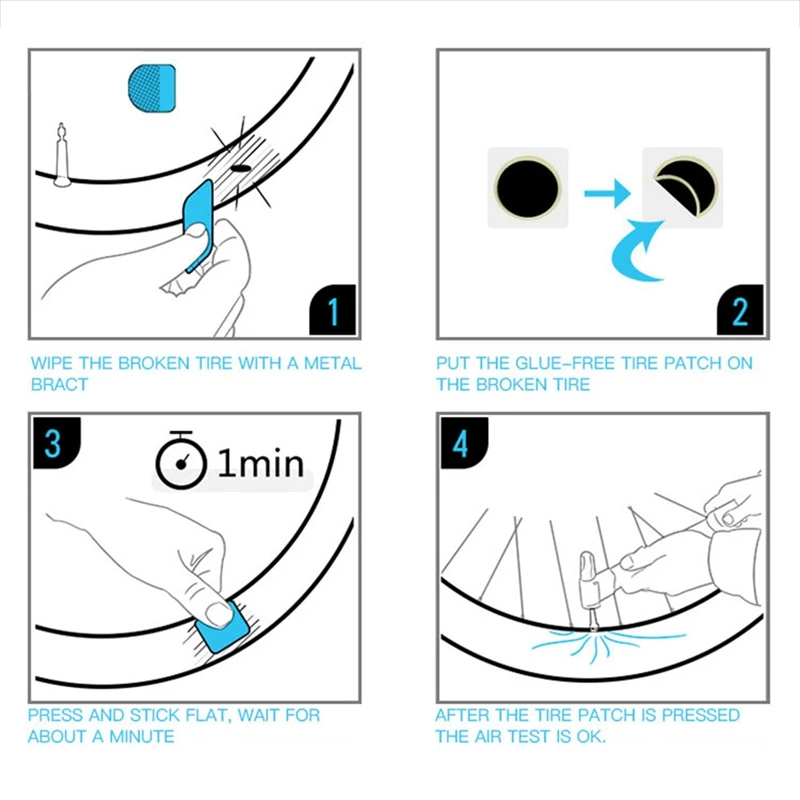
This can be a mild or a severe problem, depending on the punctured area. And if not properly attended to, could damage the whole tire, resulting in replacement and a lot of dangers while driving.
When your tires get punctured, You may not notice it instantly at first. So here are a few certain ways to find out if your tires have been punctured or not:
This actually depends on the punctured area. If the object pierces through the center of the tread area, then it can be patched.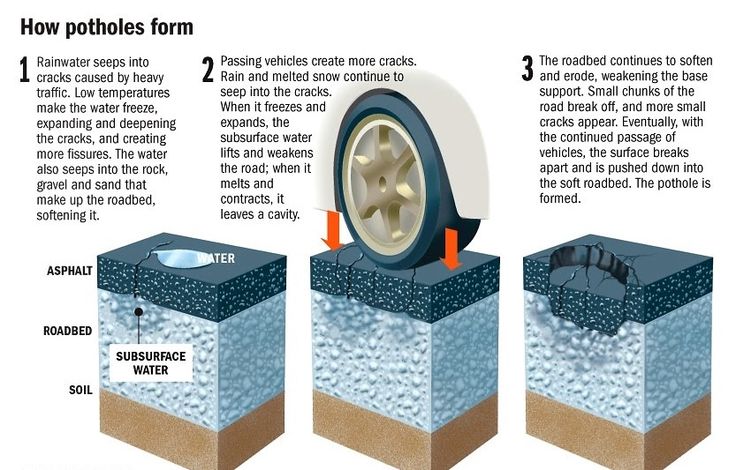 But a puncture greater than ¼ of an inch or 6mm will require a tire replacement.
But a puncture greater than ¼ of an inch or 6mm will require a tire replacement.
In many cases, bent nails are in the perfect position to pierce through anything that comes in close contact with them. And car tires are one of their top victims.
However, there are also a few small and sharp objects you should look out for. These include:
A good driver should always be prepared for any road hazard like a puncture. And being able to identify one is always crucial before patching your tire.
Proper tire repair helps prolong the lifespan of car tires. This then leads to a number of advantages on your end as a car owner.
Here’s a few of them:

Improper repairs can lead to conditions that can put people’s safety in danger while on the road. Additionally, it can lead to constant loss of air pressure which then leads to premature tire replacement.
There are a few different methods to patch a punctured tire. Here are the most common types:
A tire patch is a repair method that works well for leaks and small punctures. But only if the damage is in the center of the tread area.
It is highly recommended that a professional performs this repair.
When patching, proper inspection to locate the puncture is a must. The tire should be removed carefully from the wheel and then the rim.
The tire should be removed carefully from the wheel and then the rim.
The technician will then buff the surface of the puncture so the patch can attach itself to it. The patch will then be glued over the puncture, smoothen out and finished off with a patch sealer.
A proper tire patch takes about 20 to 30 minutes. This is because the tire has to be taken off the car and inspected properly.
Without taking the tire off the car, there is no way for the technician to properly inspect the inside of the tire. Remember, tire patches are only applied if the puncture is in the tread area only.
A patched tire, if repaired by a professional, can last 7 to 10 years. This is why it is recommended to get your tire patched by a technician, since they have the knowledge, skills and tools to complete the job.
A tire plug is a quick yet temporary repair method where a sticky piece of string, coated with unvulcanized rubber, gets pushed into the punctured area of your tire so air cannot escape.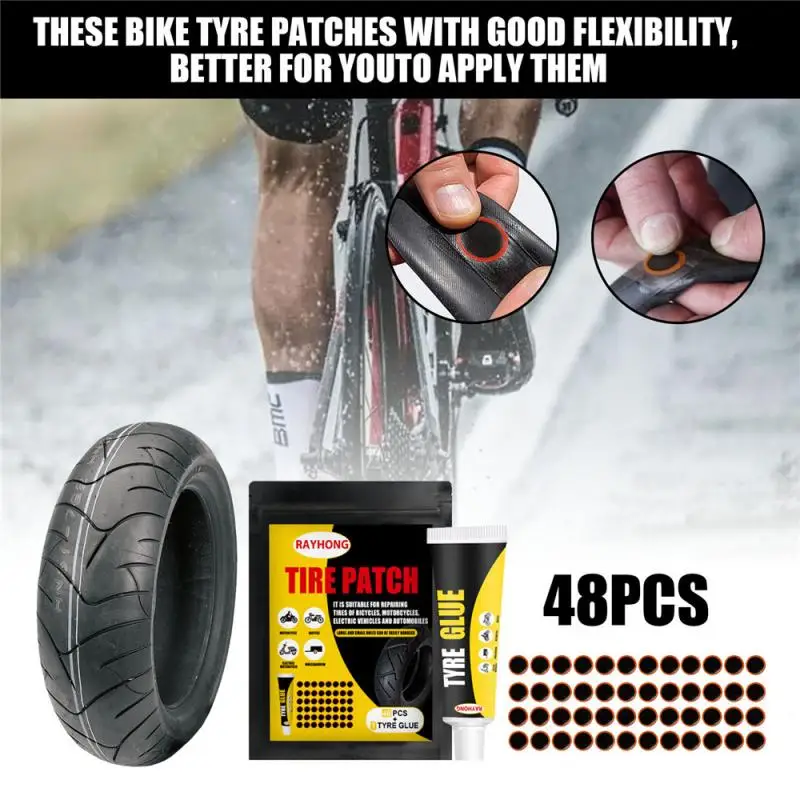
Unlike a tire patch, you can do a tire plug on your own. And since it’s a quick repair method that’ll help get you off the road, having your own tire repair kit will come in handy. Here are a few options you can easily buy online:
| Preview | Product | Price | |
|---|---|---|---|
| Boulder Tools - Heavy Duty Tire Repair Kit for Car, Truck, RV, SUV, ATV, Motorcycle, Tractor,... | $39.99 | Buy on Amazon |
| Preview | Product | Price | |
|---|---|---|---|
TECCPO Tire Repair Kit, 100Pcs Heavy Duty Tire Plug Kit for Car, Truck, RV, ATV, Tractor, Trailer,.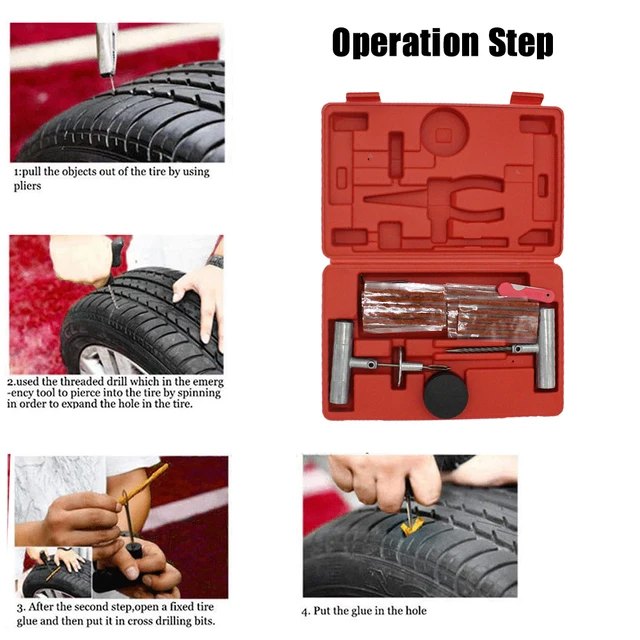 .. .. | Buy on Amazon |
| Preview | Product | Price | |
|---|---|---|---|
| Tooluxe 50002L -35 Piece Tire Repair Universal Heavy Duty Tire Repair Kit with Plugs, Fix A Flat... | $18.96 | Buy on Amazon |
First, you need to remove the object that punctured your tire using the kit. Second, you need to widen the hole slightly with the large puncture tool and place the string on the needle-like tool. Finally, you will press the plug through the hole and pull the tool so the plug gets left behind to seal the hole.
A tire plug takes only just a few minutes, not even more than 15 minutes. This is because it doesn’t require tire dismounting, unlike a tire patch.
This method can only last up to 25,000 miles. It is not as reliable as a tire patch. But it is a good alternative if you need to drive off to find better repair.
A tire patch-plug is a type of repair combining both the patch and plug methods. This involves using a small, round rubber patch with a plug in its center.
This is the best among all three options as it creates a better, safer and long-lasting solution for punctures. This is why most professionals prefer this repair method.
The tire patch-plug requires drilling through the puncture to widen it so that the small round patch’s plug can fit through.
The technician will then buff the puncture from the inside of the tire and glue the patch in place. After that, the technician will pull the plug from the outside of the tire. Finally, once the plug is pulled all the way through, the technician will then cut the plug’s length to match the tire’s tread.
After that, the technician will pull the plug from the outside of the tire. Finally, once the plug is pulled all the way through, the technician will then cut the plug’s length to match the tire’s tread.
A tire patch-plug is a time-consuming process. It will take around 30 minutes or more to finish the whole process. It’s because it’s a combination of both the patch and plug’s repair processes.
When done correctly by a technician, a patch-plug can last the whole lifetime of the tire with no issues. This is also the reason why technicians prefer this method over other repair methods.
Now that you are familiar with the most common repairs for punctures, it’s important to know next which one of these methods is best suited for your tires.
See below for the most important questions to ask when evaluating whether your tire needs a patch, plug or a replacement.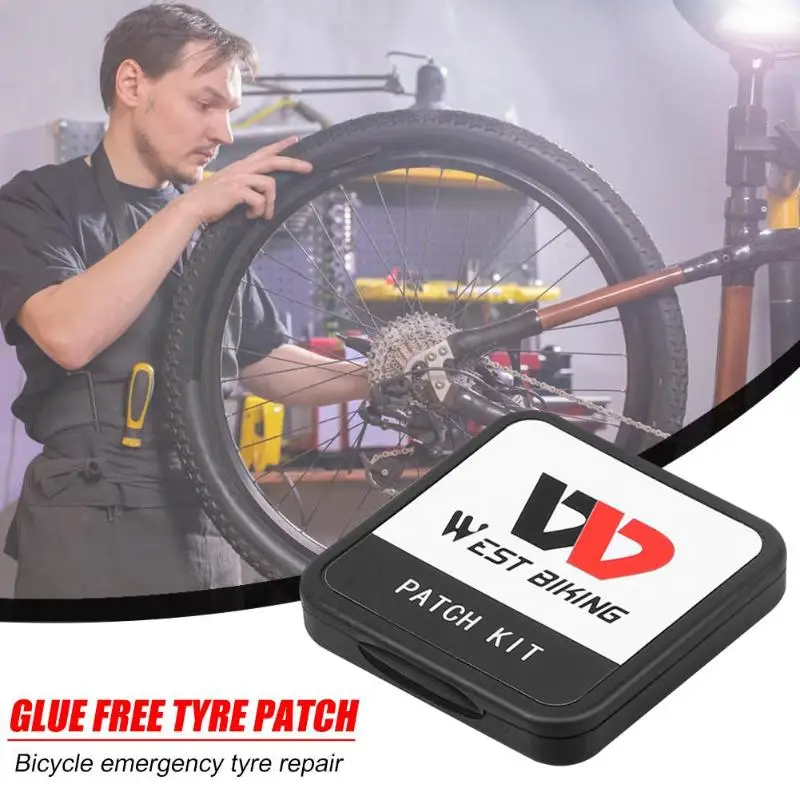
If a puncture is in the center of the tread area and is no greater than ¼ of an inch (6mm), then you are in luck! Your tires can still either be patched or plugged.
(gcpics / Shutterstock.com)If the cut or puncture is greater than ¼ of an inch, and is located or extends through to the shoulder or sidewall area, then you will need tire replacement. Repairing anything of that size will reduce the tire’s durability.
If a puncture is less than ½ inch from the steel belts on the shoulder or sidewall, then it is no longer repairable.
(Pixelbender36 / Shutterstock.com)The sidewall of your tire is under a different form of pressure and flexes often while you drive. If you patch or plug a puncture that is too close to the sidewall, it will cause an unexpected and dangerous blowout. This is why you need to have your tire replaced.
If you don’t want to break the bank buying new tires, blemished tires are a good alternative.
Under certain circumstances, patching a run flat tire is possible. A lot of factors need to be considered, like the nature of the puncture and how big the damage was.
If the puncture is small, then patching will do. However, if for example, the reinforced sidewall sustained a lot of damage, then a tire replacement is the way to go.
(Smile Fight / Shutterstock.com)Keep in mind that careful inspection of the tire will determine whether the tire needs a patch or a replacement.
Ultimately, when the situation arises, it’s best to use your judgment based on your tire manufacturer’s recommendation or repair policy. And if unsure, ask for assistance by contacting your tire manufacturer’s customer service.
No. Even though a tire patch can last 7 to 10 years (if done properly), doing it twice is not recommended by professionals. The same goes for repairing overlapping punctures.
The reason behind this is that doing so can affect the tire’s speed rating and worse, cause blowouts.
The price range to patch a tire depends on where you’re getting it from. Generally, it will cost you anywhere between $10 to $20 for the patch and rebalance. The earlier you catch the puncture, the less you’ll have to spend.
If you’re lucky enough, you may even encounter tire repair shops that offer this service for free! Or if you got the patch from your tire manufacturer, then there’s a big chance that the repair will be a free service.
However, there are shops that can charge as much as $40, especially if it’s a patch-plug repair. But remember, the patch-plug repair is the safest way to repair a puncture and is quite time-consuming.
With a proper tire patch, you can save your tire and avoid road hazards without breaking the bank. That sounds a lot better than buying new tires, doesn’t?
If you want to get the puncture fixed as soon as possible, then visiting the nearest tire repair shop is ideal.
However, if you want to know if a tire manufacturer or dealer is offering tire patching services, then continue reading below!
No, they don’t. However, they can supply you with the tools you need to temporarily repair your tire – a repair kit, rubber cement and tire patches.
Yes. Walmart patches tires at any of their locations with an Auto Care Center. However, if you don’t schedule an appointment with them in advance, they won’t be able to attend to your car troubles right away.
Walmart Auto Care Center can do the job for $15 per tire. Luckily, if you bought your tires from them, they can potentially patch your tire for free since they provide after-sale services.
Yes, the National Tire & Battery (NTB) Auto Center patches tires. According to their website, their tire patching services include tire inspection, industry-approved repairs, tire remounting and balancing.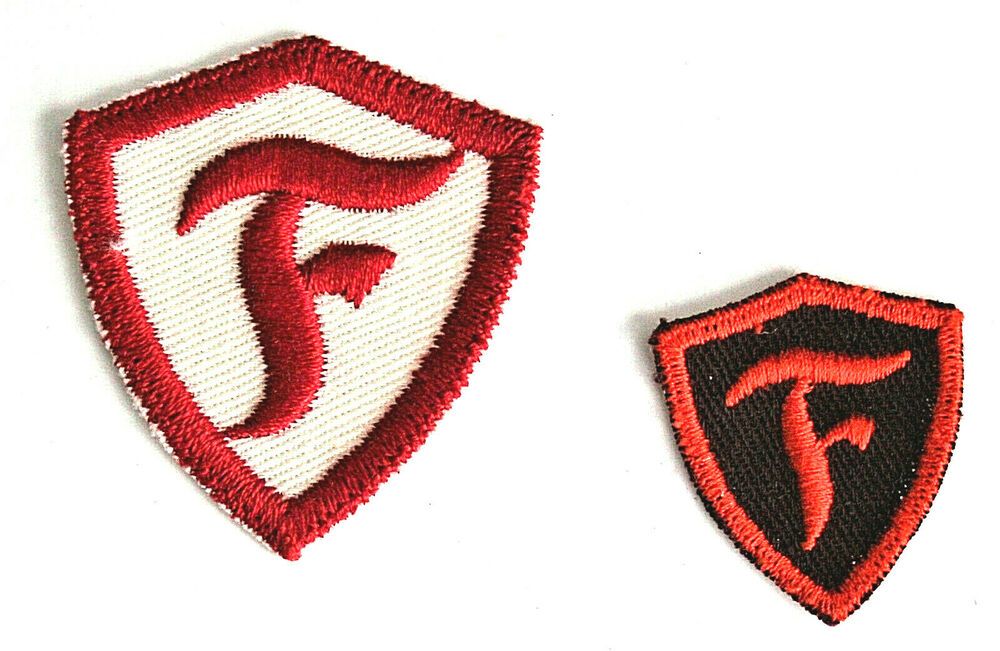
A tire patch at NTB will cost you $19.99 for each tire. Their website actually has a store selector where you can choose the nearest NTB Auto Center to you. From there, you can get an accurate pricing calculation based on your location.
Yes, but only if you are an active member. Other than a tire patch, you also get to enjoy their emergency roadside assistance that includes towing, jump start, fuel delivery service, etc.
A patch is free of charge if you’re an active member at Sam’s Club. The best part about this is that it’s a lifetime of tire repairs!
However, if you want to enjoy their other services like their emergency roadside assistance, you should get their Premium Tire Installation Package for $20.
Yes, Costco patches tires. If you got your tires installed at any of their Tire Centers, you are entitled to a lifetime of free tire repairs!
A patch is free of charge if you got your tires installed at Costco.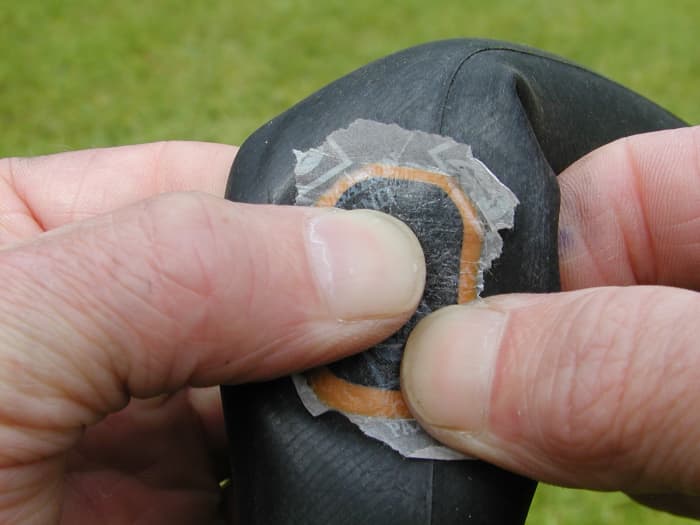 However, if your tires are not installed at Costco, they can still patch them for $10.99 each.
However, if your tires are not installed at Costco, they can still patch them for $10.99 each.
Unfortunately, no. The American Automobile Association (AAA or Triple A) does not patch or plug tires.
However, they offer roadside assistance services to get you off the side of the road. They can install a spare tire (if you already have one), re-inflate your tire and tow your car to their nearest authorized service center or to any location you choose to get your tire repaired.
It is worth noting that the extent of their assistance all depends on your membership level.
Yes, Grease Monkey patches tires. According to their website, they can patch tires in approximately 15 minutes and the whole process is done according to industry standards.
The cost of a tire patch isn’t explicitly stated on their website, but you can schedule a repair in advance and request a quote for their services.
Unfortunately, Valvoline does not patch tires. However, other than oil change services, they offer other car maintenance services like tire rotation and battery replacement.
Pepboys does patch tires. Not only that, but they also offer a complete inspection of the tire before repairing it, tire balancing and even a courtesy vehicle inspection.
A tire patch at Pepboys will cost you $19.99 for each tire. If you prefer to book in advance, you can schedule your repair on their website.
Absolutely! Firestone patches tires. They have over 1,700 auto care stores across the US that offer tire patching and other services like mounting and balancing.
The exact cost of a tire patch at Firestone is not stated on their website. However, you can schedule your appointment with them online and find out.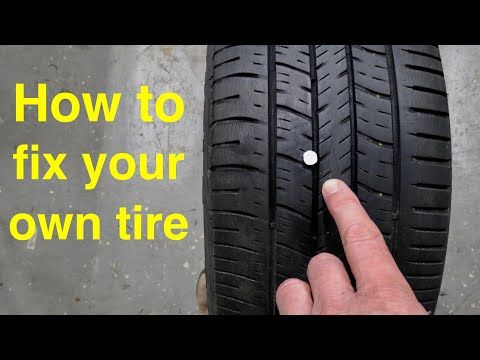 This’ll depend on your car’s year, make and model.
This’ll depend on your car’s year, make and model.
Yes. Jiffy Lube patches tires. As a matter of fact, the repair method they use is the safest, patch-plug. And the whole repair process at Jiffy Lube is all according to industry standards.
A tire patch at Jiffy Lube can cost you between $10 to $20. Since they use the patch-plug method, the whole process takes time and includes tire balancing.
Yes, Mavis Discount Tire does patch tires. The repair process at Mavis includes tire rebalancing for most cars with rims under 18 inches.
A typical tire patch starts from $23 at Mavis. However, they offer a $10 off coupon on their tire repair services for the rest of 2022, which is available on their website.
Yes. America’s Tire offers tire patching services. They follow strict industry guidelines that help keep you safe on the road.
They follow strict industry guidelines that help keep you safe on the road.
If you purchased your tires at America’s Tire, then any tire service from tire rotation to puncture repairs are free.
If a patch has been done properly according to industry standards by a professional, then absolutely!
To reiterate a few points mentioned above, proper tire repair is essential. It keeps you and everyone in the car safe on the road.
A well-patched tire poses no danger. If you had a professional do the job for you, then you can be back on the road in no time.
With this in mind, you’ll be able to drive the patched tire long distances the same way before it got punctured.
(Peter Fazekas / Pexels.com)A car with properly patched tires should be safe up to about 80 to 90 mph.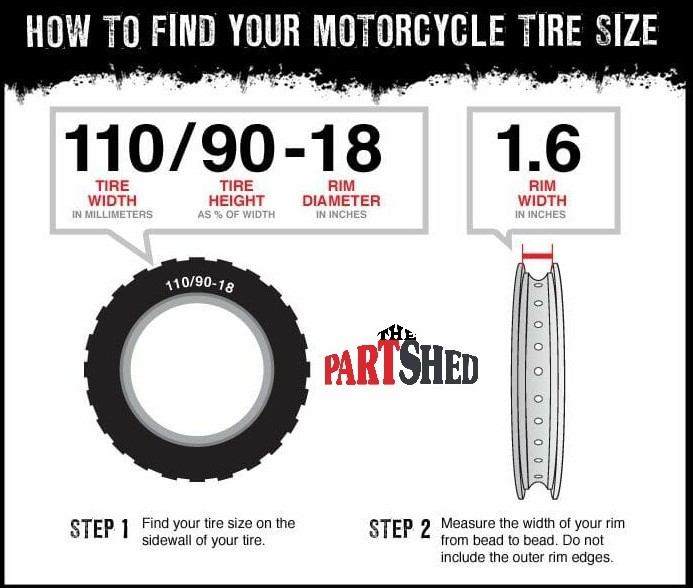 Anything beyond that depends on the quality of your tire and the patch itself.
Anything beyond that depends on the quality of your tire and the patch itself.
However, it is safer to drive a patched tire according to the recommended speed limit.
Tires are one of the most essential components of a vehicle. We rely on them to bring us to all our destinations safely. So keeping them in good shape and taking care of them is a must.
Being prepared to handle a puncture while you’re on the road not only keeps you safe but also keeps your tires’ life long – delivering thousands of miles and ensuring a safe trip and a stable performance.
By Admin
Posted in Uncategorized
Flat tires can happen at any time and can make you feel helpless. But if you are armed with some information and quick fixes, you should be back on the road quickly.
If you notice that your tire is flat but still has some air in it, you might be able to fix it with a tire patch as long as the hole is not in the sidewall. You should never drive on a tire that is more than ten pounds low on air. If the leak allows the rest of the air out, you could end up driving on the rim, which will cause damage. So what should you do when it seems like your tire is low?
You should never drive on a tire that is more than ten pounds low on air. If the leak allows the rest of the air out, you could end up driving on the rim, which will cause damage. So what should you do when it seems like your tire is low?
Jack the vehicle up using the jack points closest to the tire. Slowly rotate the tire to find the problem. If you don’t see an object sticking out of the tire or a hole, there’s a trick to discovering the leak. Make a mixture of liquid soap and water. As you brush the water on the tire, the mixture will create bubbles where the hole is located. If you mark the hole with chalk or white shoe polish you can easily find it again.
If the hole was caused by a nail or screw and is small, you can plug the tire, but larger holes will need to be patched. A tire plug kit contains two T handles: One has a point and a rough shaft and the other has an “eye” at the end of it.
Air the tire up to about five pounds over the recommended pressure. Next, thread a plug through the eye on the smooth-shafted T handle. Insert the T handle without the eye into the hole in the tire. Push it in and pull it out three or four times. Remove the T handle and then push the plug-loaded T handle into the hole in the tire so that the plug is all the way inside the tire. Pull the T handle out. The plug will stay in the tire and will be visible.
Next, thread a plug through the eye on the smooth-shafted T handle. Insert the T handle without the eye into the hole in the tire. Push it in and pull it out three or four times. Remove the T handle and then push the plug-loaded T handle into the hole in the tire so that the plug is all the way inside the tire. Pull the T handle out. The plug will stay in the tire and will be visible.
While you can patch a tire yourself, it may be better to bring your car to a tire shop. You must first remove the tire to install the tire patch and then remove the tire from the rim. While it’s possible to do this yourself, it can get pretty complicated.
If the hole is too big to plug, you shouldn’t try to drive. A hole that’s big enough for a patch will leak quickly. The easiest and best thing to do to avoid damaging your rim is bring the tire to a tire repair center.
If you must drive the vehicle, remove the damaged tire and wheel, and install the spare.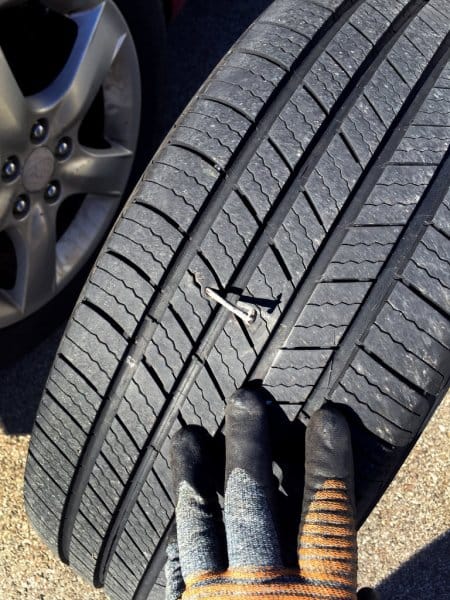 If you have another mode of transportation, remove the tire and wheel, and bring it to a tire repair center so it can be repaired safely.
If you have another mode of transportation, remove the tire and wheel, and bring it to a tire repair center so it can be repaired safely.
You can drive for many miles on a plug or patch, however, if you notice another leak it may be time to head to a service center. If you need a second tire patch, the tire is ready to be replaced.
Safety is always the number one priority. A tire patch can help with a small leak, but if more than one is needed, it’s time for a replacement.
Photo: Mikhail Tereshchenko / TASS
adv.rbc.ru
See also
Nail, rebar or sharp stone - sometimes you can damage a tire almost from scratch. First of all, the scale of damage is important, and often rubber can still be repaired. Most often, motorists turn to tire shops for repairs in the middle of autumn or spring - just in the season of replacing summer tires with winter tires and vice versa.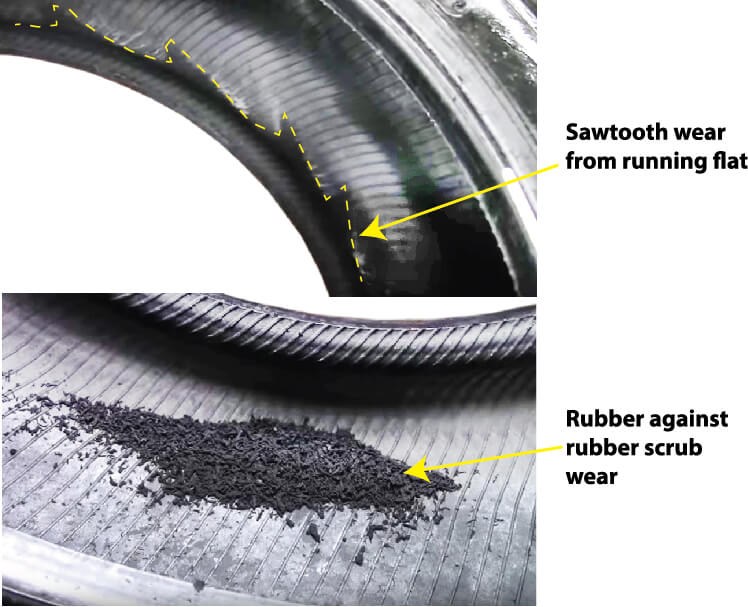 In order not to stand in lines, it is worth knowing exactly when to go to the tire shop and when to go to the store.
In order not to stand in lines, it is worth knowing exactly when to go to the tire shop and when to go to the store.
The most common "injury" to rubber is a puncture, and it can most often be repaired. Professionals in the nearest service will do it much faster, and your hands will remain clean. But if the puncture caught you in a deserted place, and there is a pump and a tire repair kit with harnesses in the trunk, you can patch up the tire yourself. Most often, when repairing the front tires, the wheel can not even be removed, it is enough to turn the steering wheel in the right direction and find the puncture site.
First, the hole is cleaned with a helical awl, the repair harness is smeared with glue and tucked into the eye of the awl, after which it is inserted into the tire hole. With a sharp movement, the tool is removed, and the tourniquet remains inside and securely clogs the hole. The tails are cut with a knife, but it is recommended to leave about 20 mm. After that, the tire can be inflated and the pressure checked.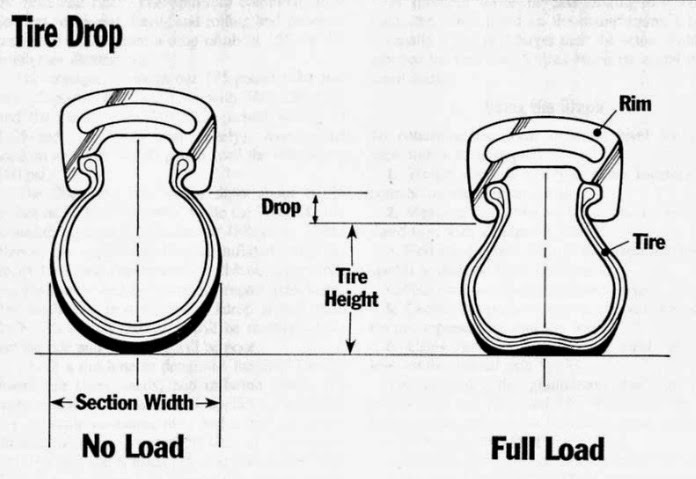
Repair with tourniquets is not considered long-term, because after some time they dry out and begin to let air through. A more advanced puncture repair method is vulcanization. The hole is sealed with an elastic patch, and the funnel at the puncture site is filled with a special compound. A vulcanizer is put on top, which heats the patch and solders the excess.
Under service conditions, the puncture is also repaired with cord fungus. The puncture site is processed and drilled to roughen. Everything is smeared with glue, after which a fungus is introduced from the inside of the tire, its cap is rolled, and the excess legs are cut off from the outside.
Photo: PA Images / TASS
A puncture can also be repaired with sealant. Many car manufacturers with run flat tubeless tires put compressor repair kits in the car instead of a spare tire - a bottle of pressurized sealant. The car is raised on a jack, after which the sealant is pumped into the damaged wheel through the nipple. Next, you need to spin the wheel and pump it up. After repair, the car should be driven a couple of hundred meters to check the tightness of the tire. If it has not recovered, the procedure is repeated.
Next, you need to spin the wheel and pump it up. After repair, the car should be driven a couple of hundred meters to check the tightness of the tire. If it has not recovered, the procedure is repeated.
It happens that a self-tapping screw or a nail closes the hole in the tire, remaining inside. Do not rush to pull it out - until the pressure drops, you can safely get to the service for vulcanization. Sometimes the wheel begins to blow off a few weeks after the self-tapping screw got into it. Therefore, it is better to check tire pressure periodically, and if the pressure sensor lights up, you should at least visually inspect the tire for a nail head.
A bump or bulge most often occurs on the side of a tire after hitting an obstacle or hitting a hole at speed. From the impact, the sidewall carcass threads are damaged, the tire ceases to hold the load and pressure, swelling appears. Any small bump eventually turns into a larger one, and with such a defect, the wheel can burst at any time. This is a direct safety hazard because a sudden flat tire can cause loss of control and a road accident.
This is a direct safety hazard because a sudden flat tire can cause loss of control and a road accident.
Some bulges can be repaired, but no patch will ever restore a tire to factory stiffness. The ideal option in this case is to replace the tire. If a hernia has appeared on the tread, then you can extend the life of the tire with the help of cord patches - ready-to-use patches with an adhesive layer. But if swelling is found on the sidewall, the likelihood of repair is minimal, the wheel is easier to change. Blisters on low profile tires are generally not repairable.
Only car service professionals can repair a side cut. Cord patches will be needed to repair the damage, but after some time the wheel will still have to be changed. This method will work only if the gap is not in the shoulder area of the tire, then no one will repair it.
In general, cuts or punctures, unlike punctures, are considered non-repairable, since the integrity of the frame is violated. And breakdowns do occur on the go, when the tire abruptly loses pressure and has time to make only a few turns “on the rims” before it comes to a complete stop. In this situation, the cord breaks and the layers of the tire are destroyed. Even if it is possible to close the hole, it is not recommended to use such a weakened tire.
And breakdowns do occur on the go, when the tire abruptly loses pressure and has time to make only a few turns “on the rims” before it comes to a complete stop. In this situation, the cord breaks and the layers of the tire are destroyed. Even if it is possible to close the hole, it is not recommended to use such a weakened tire.
Photo: Mikhail Pletsky / Russian Look
Cracks, sidewall abrasions and unprofessional tire fitting can also lead to tire problems. Cracks can occur as a result of improper storage of tires. Their danger is that moisture begins to flow to the cord, and this already renders the frame unusable. Air can also escape through cracks. Cracks cannot be repaired and tires will not last long. A tire with cracks is deformed, blistered, and may even break while driving.
Rubbing against curbs or driving on uneven roadsides can damage the tire sidewall. When driving like this, it is worth inspecting the tires for damage regularly. If a slight wear is found, the wheels can be swapped, which will slightly extend their service life and allow you to delay the purchase of new ones.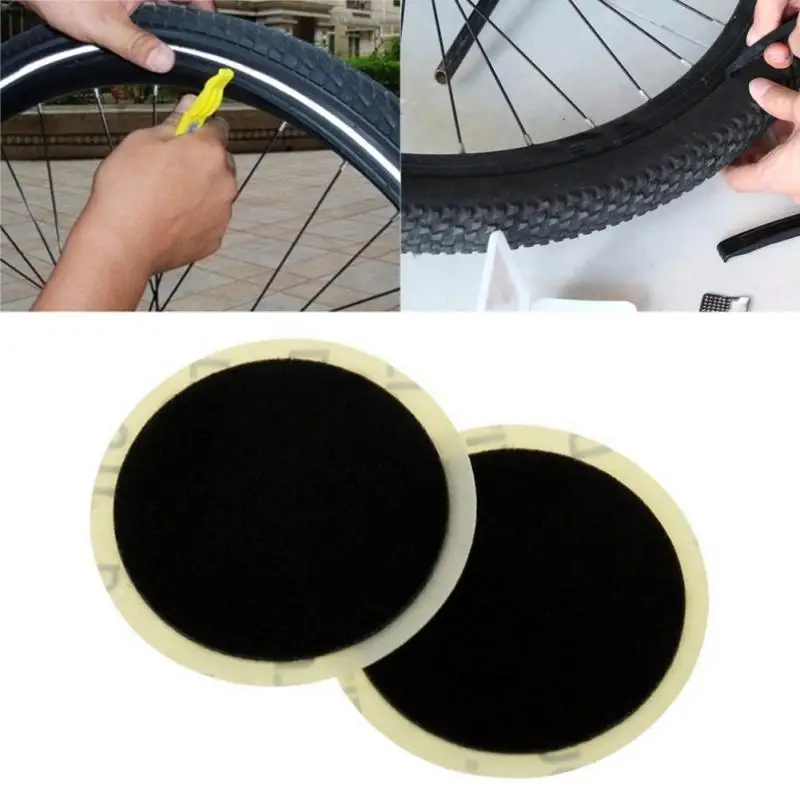
Improper fitting can damage the tire bead. In this case, the tire will lose its geometry and sit on a disc with a bevel, “eights” will be visible during rotation, and the driver will feel vibration while driving. It is impossible to repair this defect, the wheel must be changed as soon as possible, otherwise there is a risk of damage to the suspension.
How to Tires
Another season of changing shoes is approaching. And you may remember that on one of the tires after the last winter/summer there is a jamb - a small bump. I don’t want to run to the store for the sake of one new tire. We understand. Or maybe it looks even better if repaired?
Yes, not every wheel that has met with a nail, rebar sticking out of the ground or a sharp stone on the road is considered damaged. Everything, of course, depends on the scale of the damage and its location on the tire itself. Some are easily repaired, while others are simply impossible to do - the tire can only be sent to the trash.
Everything, of course, depends on the scale of the damage and its location on the tire itself. Some are easily repaired, while others are simply impossible to do - the tire can only be sent to the trash.
A bulge on a wheel, referred to by drivers as a bump or bulge, is the most common tire sidewall defect. It appears due to a collision with an obstacle or after falling into a pit, more often at high speed. The threads of the sidewall carcass are easily damaged by impact, and the tire at this point can no longer hold the load and air pressure - swelling appears. A small bump sooner or later turns into a big one, and driving with such a defect is dangerous - the wheel can shoot at any moment. At high speed, this is fraught with loss of control, departure from the road and a rollover.
The quality of roads in Kazakhstan contributes to the appearance of bulges on tires
Some types of bulges are repairable, although this is a temporary measure. Not a single patch can restore the factory rigidity. Ideally, change the tire.
Not a single patch can restore the factory rigidity. Ideally, change the tire.
Special cord patches can extend the life of a tire with a herniation, even if the swelling has appeared on the tread. The sidewall is a different story. If the swelling appeared at a distance of more than 40 mm from the side, it can be repaired. If not, then the wheel needs to be replaced. Blisters on low profile tires are most often non-repairable.
For maximum safety when riding with a repaired bump, insert the tube. This is an inexpensive and reliable solution. On our market, you can find cameras made in China and Russia, the latter are slightly more expensive, but also of better quality.
The elimination of a side cut is a serious operation, therefore, as in the case of a bump, you will have to go to the professionals. We need cord patches, fortunately in our time they are of different sizes and with a different number of layers. And if you do it wisely, then you can't do without special tools and vulcanization.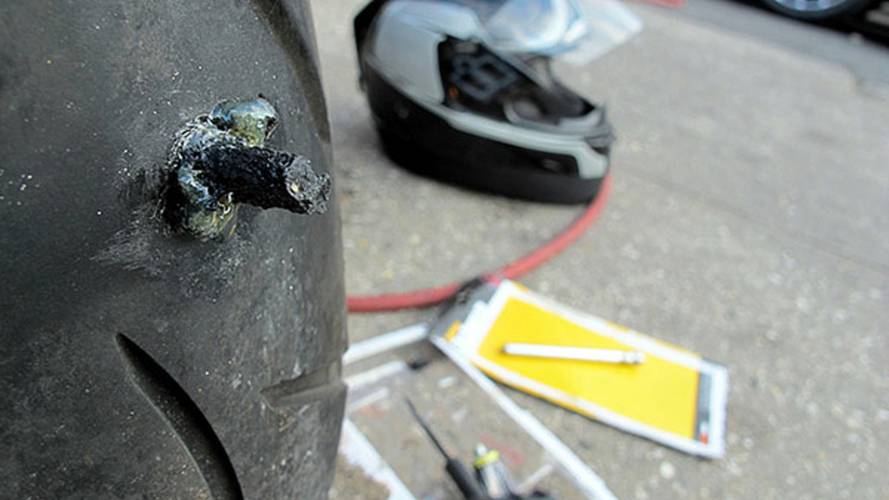
A cut, by the way, cannot be healed in all cases. If the gap is in the shoulder area of the tire, it is unlikely that anyone will undertake to repair it, since no guarantees can be given here. However, our Kulibins take on even the most difficult cases, cutting out parts of the sidewalls from the tires and even weaving the cord on their own.
Tire overhaul. We would not put such a wheel on ourselves
Low profile tires can be repaired, but more difficult. A tear in the sidewall is easier to seal on tires with a medium or high profile.
Sometimes a cut is confused with a pluck. This is when the outer layer of the sidewall caught on something sharp, a tear formed, but the frame itself remained intact. There is nothing wrong with that, although the drivers at the tire fitting company successfully repair the cut, for which they take it accordingly.
If a piece of rubber remains on the sidewall, then glue it with ordinary superglue (101st).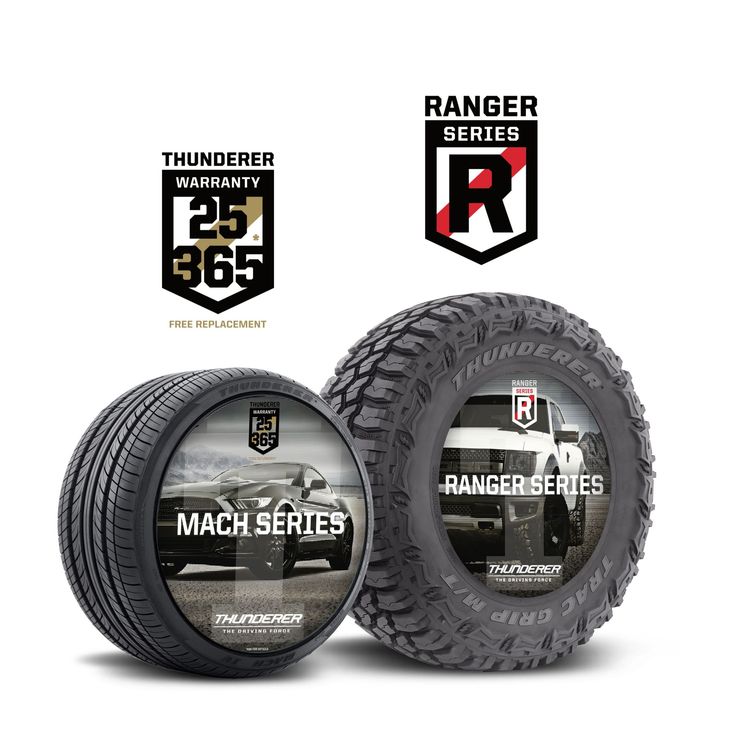 If it came off, then it is better to cover it with raw rubber and vulcanize. Leaving the pluck bare is not recommended, because the tire carcass, often consisting of a metal cord, will quickly corrode.
If it came off, then it is better to cover it with raw rubber and vulcanize. Leaving the pluck bare is not recommended, because the tire carcass, often consisting of a metal cord, will quickly corrode.
In Europe, defective or used tires are perforated before being sent for scrap to prevent their resale and possible operation. But they don’t know that we have such holes on the sidewall patched once or twice
Cuts and hernias are not the only possible damage to the side of the tire. You can also spoil the side ring, in the process of changing shoes, for example. If it’s for garlic, then such a tire is already dangerous. Sooner or later, the tire pressure and the load in motion will start to squeeze the rubber off the rim - a wheel explosion can occur.
This ailment is repaired if the wire ring - the base - is intact. There are no special technologies and materials to correct this particular problem, but most often craftsmen use a two-component composition for chemical (also called cold) vulcanization. After mixing, the mass is pressed into a fat-free damage. Compound manufacturers recommend waiting 72 hours before mounting a tire. Of course, our masters do not pay attention to this condition - they put the tire right away. And it’s good if the wheel is flat because of this at night in the parking lot, and not on the road.
After mixing, the mass is pressed into a fat-free damage. Compound manufacturers recommend waiting 72 hours before mounting a tire. Of course, our masters do not pay attention to this condition - they put the tire right away. And it’s good if the wheel is flat because of this at night in the parking lot, and not on the road.
If the side ring tears are barely noticeable, but the wheel still deflates, then you can use a special liquid - a bead seal designed to seal a tubeless tire.
These seals have been used in motorsport for some time. In particular, in the American Formula D Drift Series, drivers used compounds to keep the tire on the rim even with minimal tire pressure. Now they are banned.
Pay attention to the left rear wheel of the Nissan Silvia S13. Due to too low pressure, it was literally taken off the disk under load
Every schoolboy has faced this problem when patching his bike tube after hitting something sharp. Repairing a car tire puncture with your own hands will also not be difficult even on the road. But for this you will need a pump (or compressor) and a universal tire repair kit with harnesses. All this is sold at any car market or gas station.
Repairing a car tire puncture with your own hands will also not be difficult even on the road. But for this you will need a pump (or compressor) and a universal tire repair kit with harnesses. All this is sold at any car market or gas station.
Repairing a tire on the side of the road with harnesses
The process is simple. If we are talking about the front wheels, then in most cases the wheel can not even be removed, it is enough to turn the steering wheel in the right direction, find the puncture site and carry out repairs. First, the hole is cleaned with a helical awl from the set. The tourniquet itself is smeared with glue and tucked into the eye of the awl, after which it is inserted into the tire hole. With a sharp movement, the tool is removed, and the tourniquet remains in place and clogs the hole. The tails are cut with a knife, but not at the root, it is recommended to leave about 20 mm. The tire is inflated and checked.
Sometimes a nail or self-tapping screw clogs the hole by itself, remaining in it. If you see a hat in a tread, do not rush to pull it out. While the pressure is holding, move to vulcanize. And sometimes they drive with a screw in a tire for weeks.
If you see a hat in a tread, do not rush to pull it out. While the pressure is holding, move to vulcanize. And sometimes they drive with a screw in a tire for weeks.
Repair of a puncture at a tire shop
Punctures are also repaired with harnesses at a specialized service, although among professionals such repairs are not considered long-term. After a few months, the flagella dry out and can let air through. There are more advanced methods like cold and hot vulcanization. The latter is more reliable. In this case, the hole is sealed with an elastic patch, and the funnel from a foreign object is filled with a special compound. After that, a vulcanizer is put on the tire, it heats up the rubber and solders it.
In addition to the plaster, the puncture is also repaired with special cord fungi. Craftsmen process the puncture site: drill it and treat the surface with a tool to roughen it. Then the repair area is lubricated with glue (it is also called cement) and a fungus is introduced. This is done from the inside of the tire. The cap of the fungus is rolled, and the excess legs are simply cut off from the outside.
This is done from the inside of the tire. The cap of the fungus is rolled, and the excess legs are simply cut off from the outside.
Puncture repair with sealant
With the advent of tubeless wheels, and later run flat tires, many automakers began to abandon spare wheels. Instead, repair kits with compressors are supplied with the machines. A repair kit is essentially a bottle of pressurized sealant. Later, such spray cans began to appear on the shelves of ordinary car dealerships.
This method has not taken root in the CIS, because the condition of the roads makes it necessary to have at least a stowaway in the kit, but it can also be considered as a method of repair on the road.
The car must be jacked up and sealant must be pumped into the damaged wheel through the nipple. Next, you should spin the wheel, then pump it up, lower the car and drive a few hundred meters. If the tire tightness has not been restored, repeat the procedure.
If the tire tightness has not been restored, repeat the procedure.
For commercial vehicles, cutting the tread with a special device (regrower) is a common thing. Moreover, such tire retreading is provided by the factory (marked REGROOVABLE on the sidewall) to increase the service life. But there are entrepreneurs who undertake to deepen the grooves in tires for passenger cars. But they are not intended for such an operation. Often used tires for sale are “refreshed” in this way. Be careful!
What is the threat?
The worst option is that the retreaded tire will shoot out on the road, as the master can damage the undertread layer when deepening the grooves. Such a tire will not be able to hold pressure at some point. There will be a boom! At best, the tire will indeed last a little longer, but is the game worth the candle? We think it's not worth it.
How is cutting done?
A regrower is used to cut the tread. Roughly speaking, this is a large soldering iron with interchangeable tips of various shapes. It goes through rubber like a knife through butter.
Roughly speaking, this is a large soldering iron with interchangeable tips of various shapes. It goes through rubber like a knife through butter.
If the tire is for passenger cars, then it is worth taking on a regrower only in one case - when part of the tread pattern was welded with "new" rubber during repair. This is where threading comes in handy in order to restore the grooves and symmetry of the tread.
Vehicle operation is prohibited if:
— tires have a residual tread height of less than 1.6 mm;
- tires have punctures, cuts, tears that expose the cord, as well as delamination of the carcass, delamination of the tread and sidewall;
- tires in size or load capacity do not match the car model;
- tires of various sizes, designs (radial, diagonal, chamber, tubeless), models, with different tread patterns, winter and summer, studded and non-studded, new and restored, are installed on one axle of the car;
- Tires retreaded according to the second repair class are installed on the front axle.